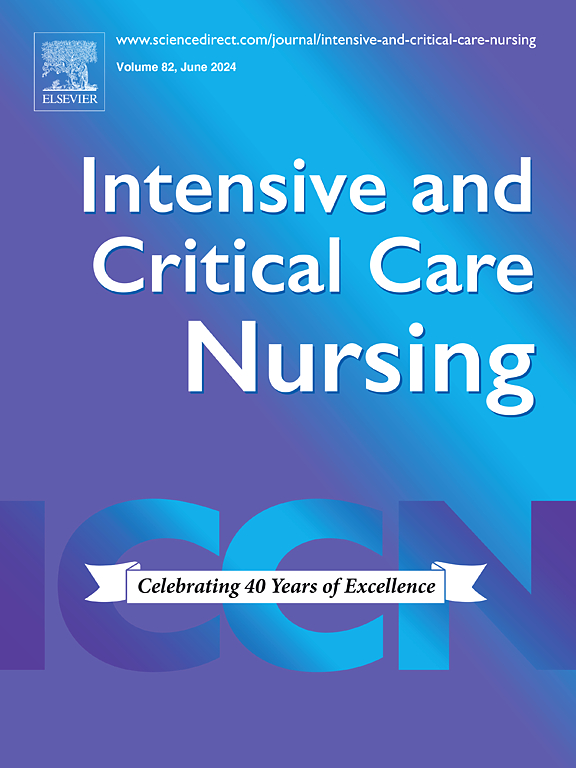减少心脏手术后手术部位感染的质量改进方案:一项10年队列研究。
IF 4.9
2区 医学
Q1 NURSING
引用次数: 0
摘要
目的:评估感染预防和控制(IP&C)质量改进倡议后心脏外科手术部位感染(SSI)发生率的趋势。方法:这是一项包含10年监测期(2014-2023)的多器官移植中心心外科的历史队列研究。该研究包括三个时期:基线期(第一阶段:2014年1月至2018年12月);实施阶段,涵盖针对IP&C各个方面的质量改进举措,包括组织因素、术前、术中、术后措施和住院后护理(第二阶段:2019年1月至2021年6月);实施后阶段(第三阶段:2021年7月至2023年9月)。采用一般线性混合模型评估不同阶段间SSI发生率的差异,并根据住院时间、美国麻醉医师协会(ASA)身体状态分类和诊断相关组(DRG)权重进行调整。后两者被用作随机效应。结果以95%可信区间(CI)的优势比(OR)报告。结果:所有心脏手术患者均被纳入(n = 5851)。共有208例患者发生SSI(3.5%)。phase_1、phase_2和phase_3的SSI发生率分别为4.5%、4.1%和1.2%。混合模型回归分析表明,与参考期(第一阶段)相比,SSI风险在实施阶段没有下降(OR 0.81, 95% CI 0.59-1.13, P)。对临床实践的影响:该研究表明,要实现SSI风险的大幅降低可能需要相当长的时间。我们认为这可能归因于适当遵守IP&C协议所需的时间。本文章由计算机程序翻译,如有差异,请以英文原文为准。
A quality improvement program to reduce surgical site infections after cardiac surgery: A 10-year cohort study
Objectives
To assess trends in surgical site infection (SSI) incidence in cardiosurgery following a quality improvement initiative in infection prevention and control (IP&C).
Methods
This is a historical cohort study encompassing a 10-year surveillance period (2014–2023) in a cardiosurgical department in a multi-organ transplant center. The study encompassed three periods: a baseline period (Phase_1: January 2014-December 2018); an implementation phase covering quality improvement initiatives targeting various aspects of IP&C including organizational factors, pre-operative, intra-operative, post-operative measures, and post-hospitalization care (Phase_2: January 2019-June 2021); a post-implementation phase (Phase_3: July 2021-September 2023). A general linear mixed model was used to assess differences in SSI rates between distinct phases, adjusted for length of hospitalization, American Society of Anaesthesiologists (ASA) physical status classification, and Diagnostic-Related Groups (DRG) weight. The latter two were used as random effects. Results are reported as odds ratios [OR] with 95% confidence interval [CI].
Results
All cardiac surgery patients were included (n = 5851). A total of 208 patients developed SSI (3.5 %). SSI incidence for phase_1, phase_2 and phase_3 were 4.5 %, 4.1 %, and 1.2 %, respectively. The mixed model regression analysis indicated that, compared with the reference period (Phase1), SSI risk did not drop during the implementation phase (OR 0.81, 95 % CI 0.59–1.13, P < 0.001 vs. reference period). A decrease in SSI risk was observed during the post-implementation phase (OR 0.19, 95 % CI 0.11–0.32)
Conclusions
A quality improvement initiative encompassing measurements at all levels potentially impacting SSI risk was implemented over a 2.5 years period. While no risk reduction was observed during the implementation phase, a significant reduction in SSI risk took place in the post-implementation phase.
Implications for Clinical Practice
This study suggests that considerable time may be required to achieve a substantial SSI risk reduction. We assume this may be attributed to the time required to achieve appropriate adherence with IP&C protocols.
求助全文
通过发布文献求助,成功后即可免费获取论文全文。
去求助
来源期刊

Intensive and Critical Care Nursing
NURSING-
CiteScore
6.30
自引率
15.10%
发文量
144
审稿时长
57 days
期刊介绍:
The aims of Intensive and Critical Care Nursing are to promote excellence of care of critically ill patients by specialist nurses and their professional colleagues; to provide an international and interdisciplinary forum for the publication, dissemination and exchange of research findings, experience and ideas; to develop and enhance the knowledge, skills, attitudes and creative thinking essential to good critical care nursing practice. The journal publishes reviews, updates and feature articles in addition to original papers and significant preliminary communications. Articles may deal with any part of practice including relevant clinical, research, educational, psychological and technological aspects.
 求助内容:
求助内容: 应助结果提醒方式:
应助结果提醒方式:


